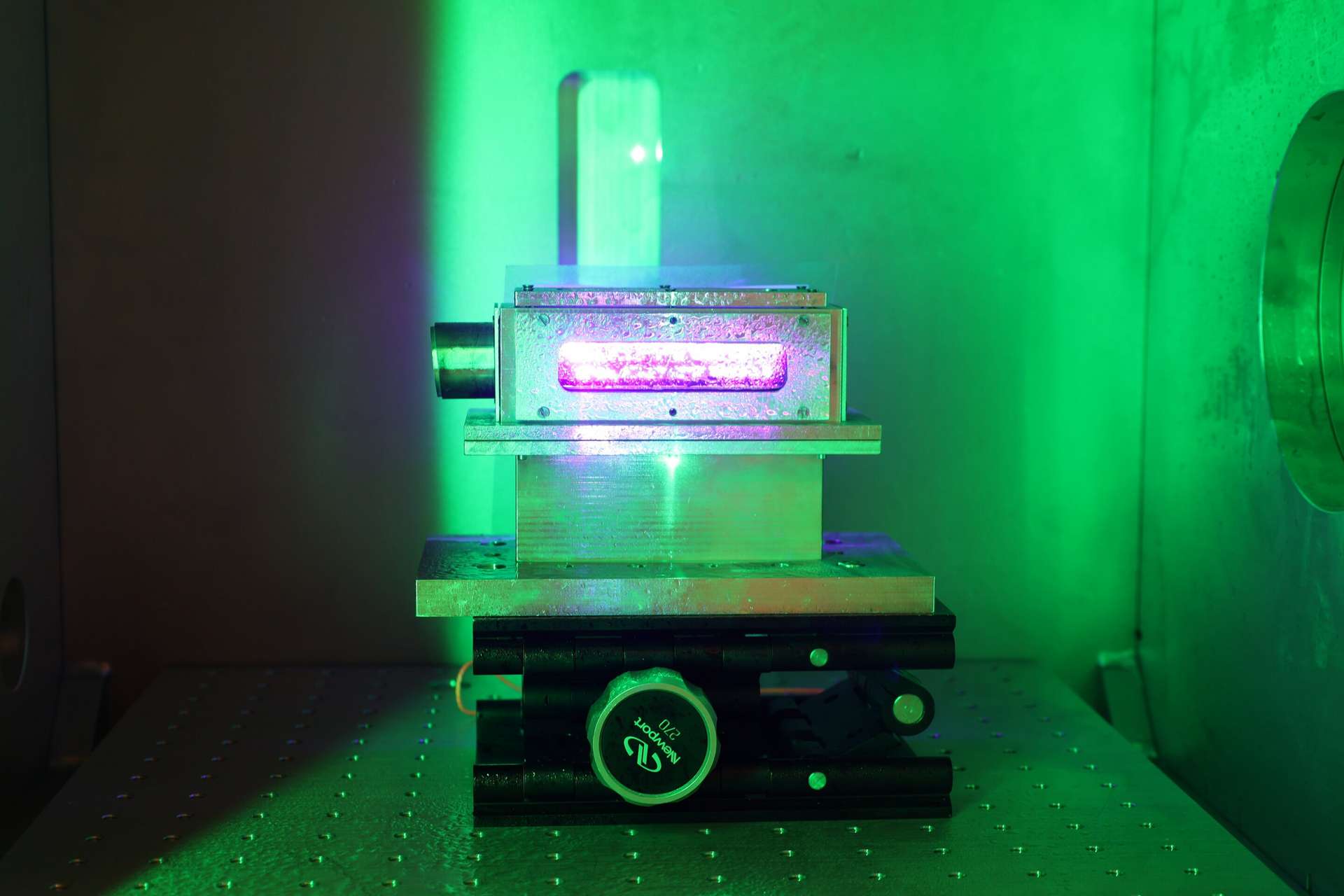Researchers are working on a compact particle accelerator that can generate a 10 GeV beam despite being only 20 meters long. This device could pave the way to new applications in medicine and electronics.
This will also interest you
[EN VIDÉO] LHC: How does the largest particle accelerator work? The Large Hadron Collider spans France and Switzerland and is currently…
Researchers at the University of Texas at Austin have succeeded in setting a new performance record with a compact particle accelerator. Particle accelerators typically require long tunnels, often several kilometers long. The largest, the LHC (Large Hadron Collider) at CERN, measures 27 kilometers.
In an article published in the journal Matter and Radiation at Extremes, the researchers point out that they managed to generate an electron beam of 10 GeV (billion electron volts) using a particle accelerator that was only 20 meters long. For comparison: the two accelerators in the USA that can achieve such performance are around three kilometers long.
Nanoparticles that release electrons
According to the researchers, the secret to achieving such a small size lies in the use of nanoparticles. They compare the laser to a boat on the surface of a lake, creating waves in its wake. Electrons ride these waves. Just as jet skis can help surfers reach big waves, nanoparticles release electrons at just the right time and place.
To test their system, the researchers used the Texas Petawatt Laser, but it only produces one pulse per hour. They are currently working on a laser for their system that is small enough to fit on a table and will produce several thousand pulses per second. Researchers hope to use this particle accelerator to test the radiation resistance of electronic devices for use in space or to develop new cancer treatments and advanced medical imaging techniques.

